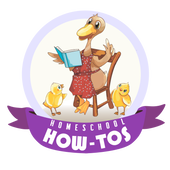Fast Phonics by Renee Ellison
Get it right, by teaching the basics of phonics on paper (NOT online), using cartoon images that tie each of the letters to its pronunciation. Renee Ellison's Fast Phonics course cuts through endless time-consuming tedium and confusion. Simple steps deliver “right-now results” initially via witty cartoons, slick tracing fun (with no pencils), and silly 3-letter word sentences—and later, much more. Watch a three-year-old boy reading the final page of the 180-page Fast Phonics printed book for the first time.
By that age he had completed the Fast Phonics program and was able to decode and read sentences containing words he had never seen before.
For more info, you could watch this video of Renee describing the program. Also, you can listen to her describe the benefits of this method of teaching your child how to read.
These are the three unique components that make Fast Phonics really speedy:
Component #1:
Fast Phonics 180-page book includes a Slide-A-Word vowel stick for your child to hold while reading short words in this book. This program includes every teaching aid imaginable, to get the child on the “reading bus” as securely, easily and fast as possible. If you’re a left-brainer detail person, here’s the table of contents. If not, here’s the overview of what’s in this book:
- Cartoon charts [i.e., the letter pictures], plus a short catchy phrase/story and reinforcing hand motions for every letter in the alphabet
- Tracing charts
- Testing charts
- 2-letter word drills
- 3-letter-word slide-a-vowel activity (developing fluency and flexibility)
- Silly sentences (3-letter-word short vowel sentences)
- Funny stories
- Long vowel exercises (converting short vowel words into long vowel words with pencil markings)
- Matching-game blends
- Irregular word right-brain memory hooks for reading diphthongs and other vowel combinations that break the rules
Component #2:
Now a young child can learn letter sounds easily, using the Fast Phonics letter cartoons. Why is it so easy? Because the clue to the letter SOUND is hidden in the letter SHAPE. The key to the letter is hidden in plain sight! Learning the correct SOUND of letters, not their alphabet NAMES at first, eliminates confusion and speeds up the reading process.
Learning these carefully crafted sound/symbol/letter cartoons [i.e., the letter pictures] gives your child “right-now” first step success. These pictures create a memory hook so strong, the child gains almost instant recall. Captured by these whimsical letter images, children have begged to do them again and again. Parents/teachers like the letters, which are nearly full letter-size on some pages.
48 pages, 8 1/2 x 11” softcover. This is a good supplement to the 180-page Fast Phonics book—or a good precursor to that. This is what the Letter Cartoons book contains:
- Why they work—and how to use them [this is the basic overview and user instructions; 2 pages]
- A-Z letter cartoons (each on its own page)
- Plain letter charts for testing your young child’s phonetic sound recognition
- Tracing charts (these have starting dots and arrows) for teaching a child how to trace a letter
- Two pages of first words
- Two pages of 2-letter words
What is the difference between the two Fast Phonics books?
This preschool book only teaches the beginning phonetic sounds, and your child will only be able to read two-letter words after that. The other day we saw a young child flipping through the pages of this book (he took this on himself, of his own accord; he chose it instead of the scores of children’s books around him), reading and saying the letters—which are full size in this book (they are 6 to a page in the full book).
The full Fast Phonics book, on the other hand, teaches all of the skills necessary for reading. Most parents buy BOTH—because the cartoon letters are jumbo size in the little preschool book and are much more FUN to encounter for the first time—but it is not NECESSARY to begin that way. The same cartoon letters are in the bigger book—just far smaller than in the preschool book.
Component #3:
Three glossy letter charts: Take these charts anywhere to learn letters everywhere: in the car, outside under a tree, or on the couch! Includes the three learning letters charts (cartoon, tracing and tester charts) that are contained in the 180-page book. Having them in this easier to use, portable format makes teaching this vital first step far “handier” for lots of quick spaced repetition drills. Because they are printed on smooth, glossy card stock, your child will enjoy the feel of them, too. Each chart is 11x17”, folded in half.
For the strongest impact, we recommend you purchase all three parts in the complete set, because they work synergistically. (That's what most people do--about 90% of the time.) The total cost is less expensive than almost any other phonics program—and more effective.
Buy the complete set and save.
Comments -- a Fast Phonics review from a family in Minnesota:Mom loves it The two-year-old looks on & repeats the sounds while his 2nd grade brother reads at the 4th grade level due to his quick start in phonics 3 years ago. Another brother started learning it age 4, and a fourth brother already knows many of the sounds at age 4. It’s bridging the gap for a cousin mom who is using 100 Easy Lessons; her daughter hadn't mastered the sounds by that program alone. Another cousin’s 7-yr. old whose left side is partially paralyzed by Lyme disease is reading two-letter words using Fast Phonics to automate the sounds. It’s fast, fun, & fantastic! Mrs. F.








